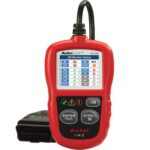Understanding your vehicle’s performance and health has become increasingly accessible thanks to On-Board Diagnostics II (OBD2) and Parameter IDs (PIDs). For car enthusiasts and everyday drivers alike, delving into OBD2 PIDs can unlock a wealth of real-time data about your vehicle’s operation. But with hundreds of PIDs available, identifying the most useful ones can be daunting.
OBD2 PIDs are essentially codes used to request data from a vehicle’s computer. These codes allow you to monitor various engine and vehicle parameters using an OBD2 scanner or adapter and compatible software or apps like Torque Pro. For anyone looking to diagnose issues, track performance, or simply understand their car better, knowing which PIDs to monitor is crucial.
So, what are some of the most valuable PIDs you should consider tracking? For performance enthusiasts, PIDs related to engine load, RPM, vehicle speed, and throttle position are essential. These PIDs can paint a clear picture of how your engine is performing under different driving conditions. Monitoring parameters like manifold absolute pressure (MAP) and mass air flow (MAF) can also provide insights into engine efficiency and potential intake restrictions.
For electric vehicles (EVs) and hybrids, the landscape of useful PIDs expands to include battery-specific data. Monitoring battery voltage, current, state of charge (SOC), and battery temperature becomes paramount. These PIDs are vital for understanding battery health, range estimation, and the efficiency of the electric powertrain. As observed in EV performance testing, PIDs can reveal interesting characteristics such as how battery voltage responds to power demands and how controllers manage torque output across the RPM range to maintain a flat power curve.
Beyond performance and EV-specific data, several PIDs are universally useful for diagnostics across all vehicle types. Coolant temperature, intake air temperature, and oxygen sensor readings are crucial for assessing engine health and identifying potential issues related to cooling, air intake, and combustion efficiency. Fuel trim PIDs can also be invaluable in diagnosing fuel delivery or vacuum leak problems.
In conclusion, the “most useful” OBD2 PIDs depend on your specific interests and vehicle type. However, a combination of performance-related PIDs (speed, RPM, load, throttle), battery-related PIDs for EVs (voltage, SOC, temperature), and diagnostic PIDs (coolant temp, O2 sensors, fuel trims) provides a comprehensive toolkit for monitoring and understanding your vehicle’s inner workings. Utilizing these PIDs with an OBD2 scanner and suitable software empowers you to gain deeper insights into your car’s performance, efficiency, and overall health.
